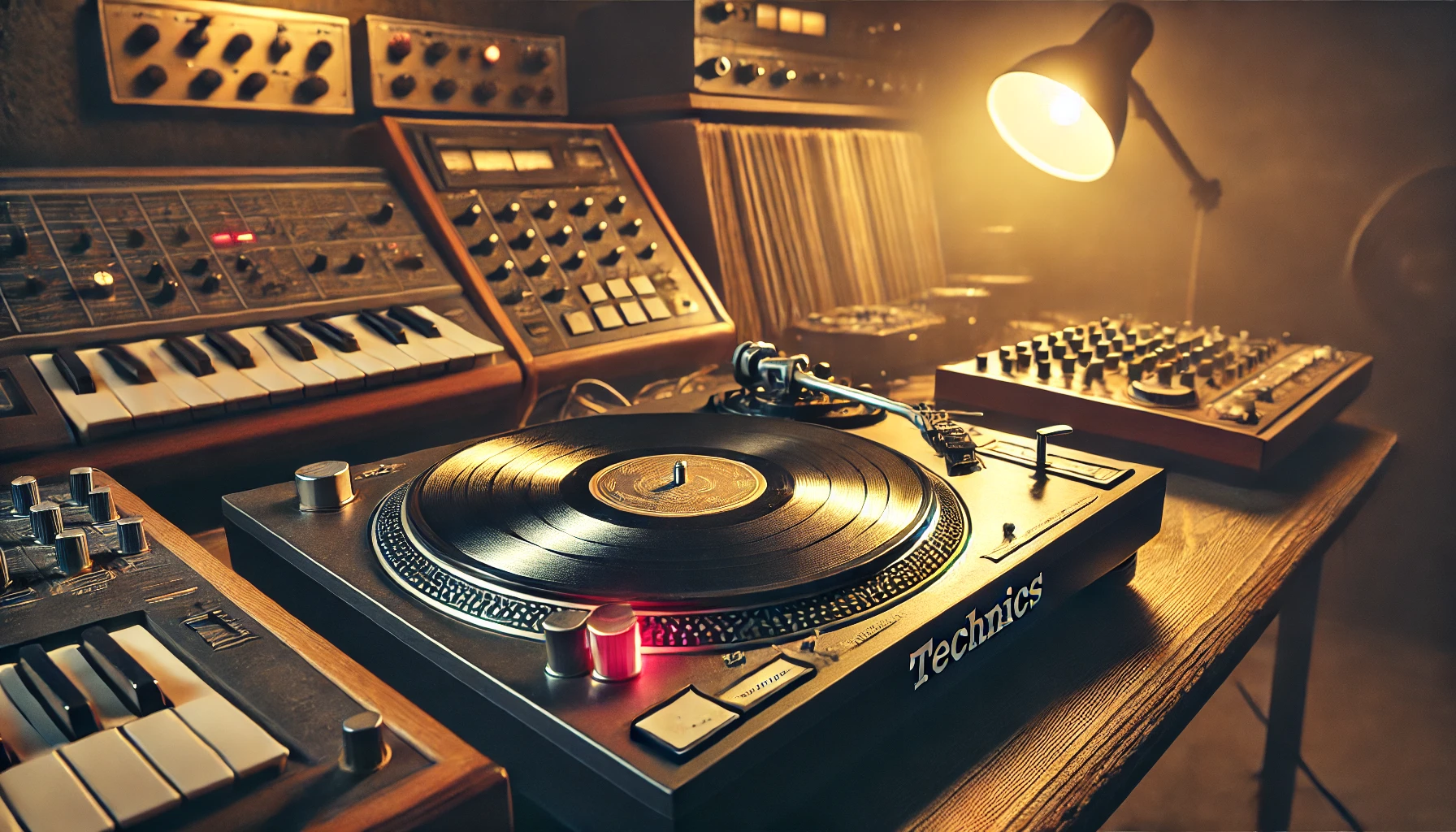You know that feeling when a song hits you right in the gut? That’s what happened to me the first time I heard Portishead’s “Glory Box.”
The scratchy, haunting melody seemed to come from another dimension, and I just had to know: what kind of sorcery were they working with?! Let me tell ya, it wasn’t magic – it was pure turntable mastery.
Portishead, those wizards of trip-hop, didn’t just stumble into their iconic sound. Nope, they crafted it meticulously, and at the heart of it all was a very special piece of equipment.
Now, I’ve been a bit obsessed with audio gear since I was a teenager (much to my parents’ dismay – sorry about all those blown speakers, Mom!). But even I was blown away when I discovered the tool behind Portishead’s groundbreaking sound.
It’s not just about the equipment, though – it’s how they used it that really sets them apart. So, buckle up, music nerds and casual listeners alike!
We’re about to dive into the world of Portishead’s legendary turntable. Trust me, by the end of this, you’ll be looking at your record player in a whole new light.
Let’s drop the needle on this vinyl journey, shall we?
What Turntable Did Portishead Use?
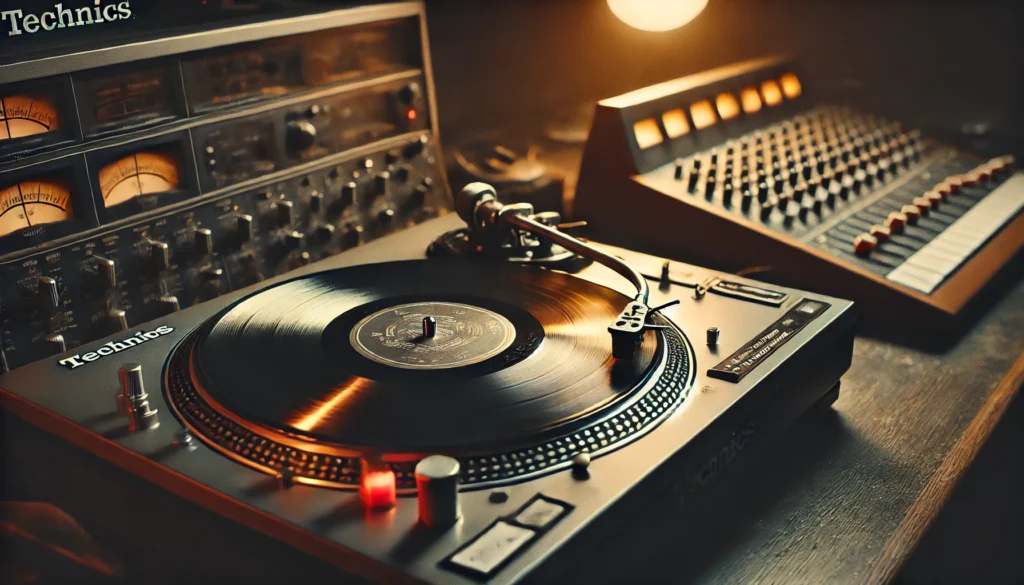
Portishead primarily used the Technics SL-1200 turntable, a legendary piece of equipment that became integral to their unique sound. This direct-drive turntable, known for its precision and durability, allowed the band, particularly DJ Geoff Barrow, to manipulate vinyl records with exceptional control.
The SL-1200’s robust motor, high-torque, and pitch adjustment capabilities made it perfect for the intricate scratching, sampling, and tempo manipulation that characterize Portishead’s music.
While this turntable was the cornerstone of their setup, it was Portishead’s innovative techniques and integration with other analog gear that truly brought their groundbreaking trip-hop sound to life.
In the following sections, we’ll delve deeper into how Portishead utilized the Technics SL-1200 to revolutionize music production and define a genre.
The Heart of Portishead’s Sound: The Technics SL-1200
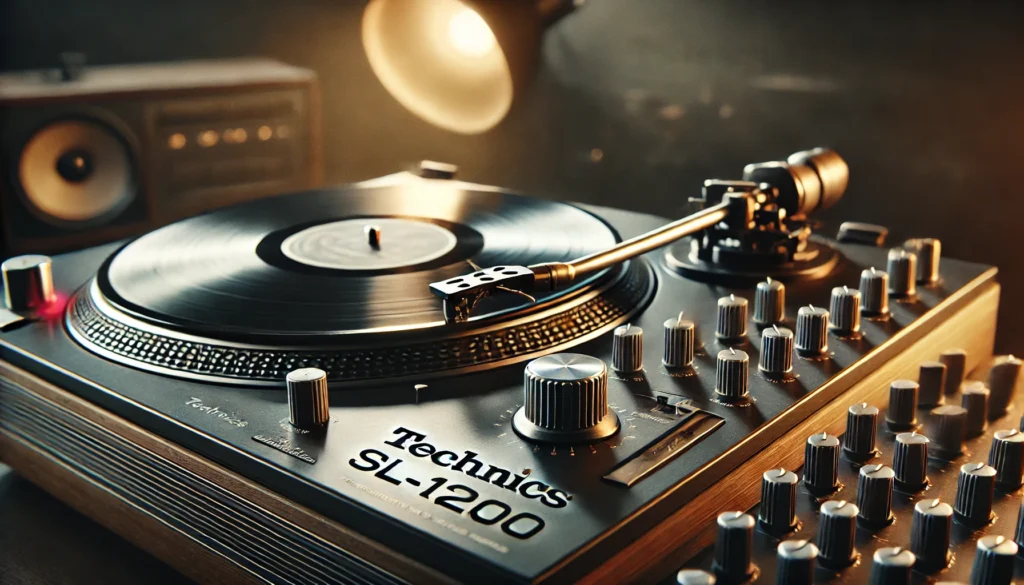
Alright, let’s cut to the chase – the turntable that gave Portishead their signature sound was none other than the legendary Technics SL-1200. Man, when I first got my hands on one of these bad boys, it was like Christmas morning!
The Technics SL-1200 isn’t just any old record player, folks. This thing is the Rolls-Royce of turntables, the crème de la crème of vinyl spinning.
It’s been the go-to choice for DJs and music producers since it first hit the scene in the 1970s. And let me tell you, there’s a good reason for that!
Now, I remember when I first tried to use a belt-drive turntable for scratching. What a disaster!
But the SL-1200? It’s like it was made for the job. The direct-drive motor gives you incredibly precise control, perfect for those delicate scratches and cuts that Portishead is known for.
But here’s the kicker – it’s built like a tank! I once accidentally knocked mine off the table (don’t ask), and the darn thing still worked perfectly.
That’s the kind of reliability that made it perfect for Portishead’s experimental style. They could push it to its limits without worrying about it giving up on them mid-session.
And let’s not forget about that pitch control slider. Oh man, the things Portishead did with that!
It allowed them to fine-tune the speed of the record, creating those eerie, off-kilter samples that became their trademark. Trust me, trying to replicate that on a lesser turntable is like trying to paint the Mona Lisa with crayons!
Portishead’s Unique Approach to Turntablism
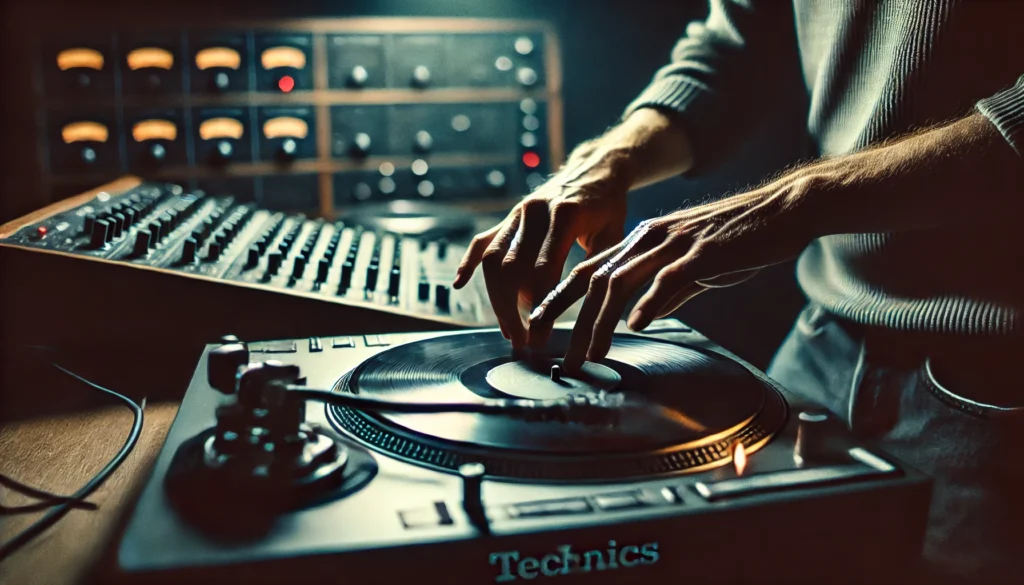
Now, having a Ferrari doesn’t automatically make you a race car driver, right? Same goes for turntables.
It’s not just about the equipment – it’s how you use it. And boy, did Geoff Barrow know how to use it!
Geoff’s approach to the SL-1200 was like nothing I’d ever seen before. Most DJs I knew were all about fast scratches and quick cuts.
But Geoff? He treated that turntable like it was an instrument in its own right. I remember trying to replicate his technique once.
Let’s just say my neighbors weren’t too happy with me that week! Geoff would often use the turntable to create long, drawn-out drones by playing a single note or sound and manipulating it with the pitch control.
It’s harder than it sounds, trust me! Take a track like “Mysterons” from their debut album “Dummy”.
That haunting, oscillating sound that opens the track? That’s all turntable magic, baby! Geoff would find these obscure samples, slow them down to a crawl, and layer them to create textures that were totally unique.
And don’t even get me started on “Strangers” from their second album. The way they integrated scratching into the fabric of the song was mind-blowing.
It wasn’t just a cool effect – it was an integral part of the composition. I spent weeks trying to figure out how they did it!
The Legacy of Portishead’s Turntable Choice
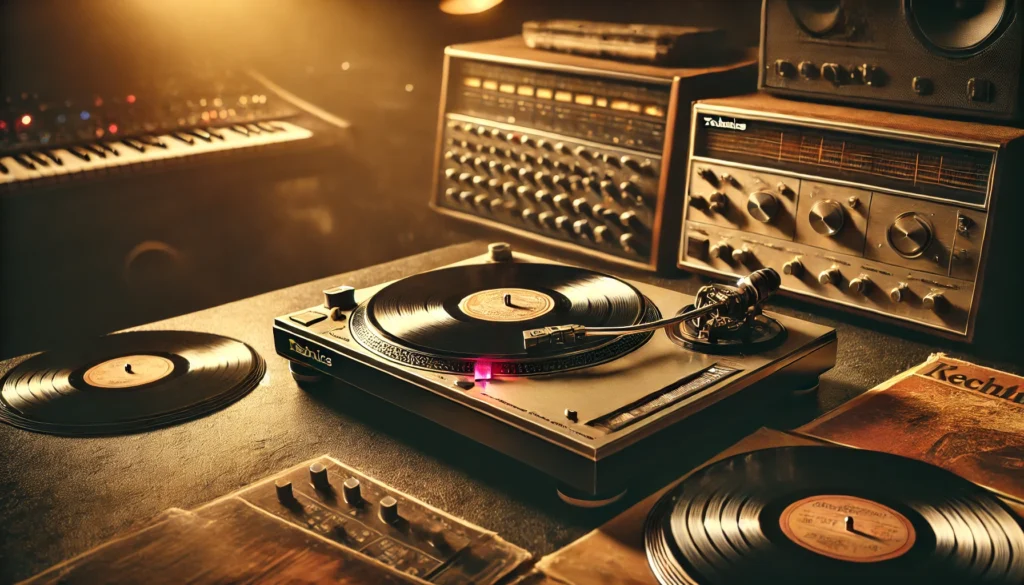
You know how they say imitation is the sincerest form of flattery? Well, after Portishead burst onto the scene, suddenly everyone and their grandma wanted an SL-1200.
It became the must-have piece of kit for anyone dabbling in trip-hop or experimental electronic music. I remember saving up for months to buy my first SL-1200.
When I finally got it home, I felt like I was part of some secret club. Like I finally had the key to unlocking those mesmerizing Portishead sounds.
But here’s the thing – it wasn’t just Portishead. The SL-1200 became synonymous with the entire trip-hop genre.
Artists like Massive Attack, Tricky, and UNKLE all embraced this turntable, each putting their own spin on its capabilities. And get this – even in today’s digital age, where you can do pretty much anything with a laptop, there are still artists out there swearing by the SL-1200.
I was chatting with a young producer the other day who told me he’d just bought one. “Nothing else gives you that warmth,” he said.
Couldn’t agree more, kid!
Beyond the Turntable: Portishead’s Full Setup

Now, as much as I’d like to tell you that all you need is an SL-1200 to sound like Portishead, that’d be a big fat lie. Sorry to burst your bubble!
The turntable was just one piece of a much larger puzzle. Portishead’s studio was like a mad scientist’s lab of audio gear.
They had all sorts of vintage synthesizers, drum machines, and effects units. I once got a peek at a similar setup and nearly drooled all over myself!
One key piece of kit was their mixing desk. They used an old Soundcraft analog mixer that added its own flavor to their sound.
Trying to recreate Portishead’s warmth and depth with a modern digital setup? Good luck with that!
They also made heavy use of tape machines. Yeah, you heard that right – actual tape!
In an era when everyone was going digital, Portishead stuck to their guns and kept it analog. It’s part of what gives their music that gritty, lived-in feel.
But here’s the genius part – they found a way to make all these elements work together seamlessly. The turntable wasn’t just a standalone thing; it was integrated into this whole ecosystem of sound.
It’s like they were conducting an orchestra of old-school audio gear!
The Evolution of Portishead’s Sound and Equipment
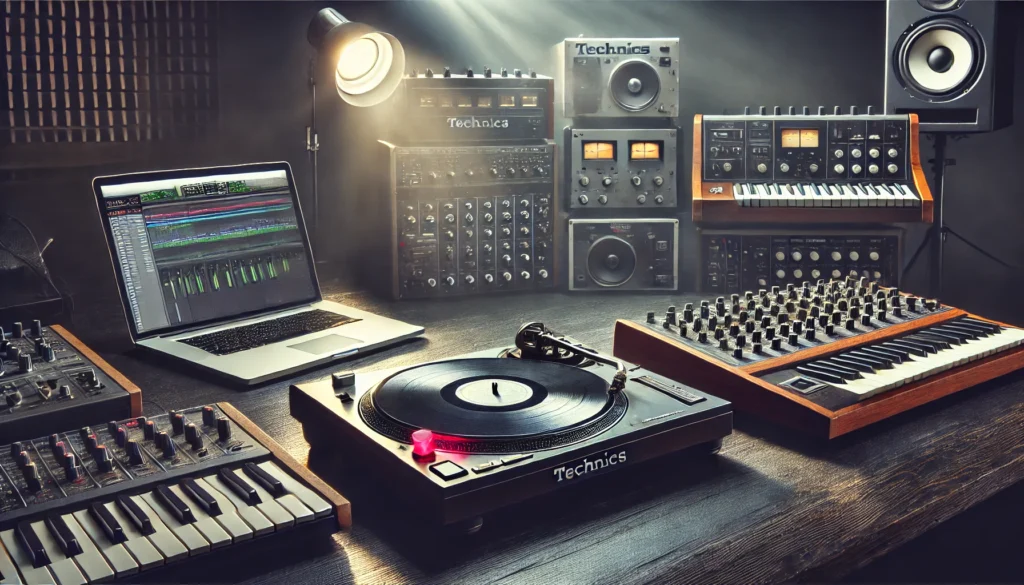
Now, you might be thinking, “Surely they’ve moved on from all this old gear by now?” Well, yes and no.
Portishead has definitely evolved over the years, but they’ve never lost touch with their roots. I remember when “Third” came out in 2008.
Man, what a curveball that was! It was like they’d taken their old sound and put it through a wood chipper.
But you know what? If you listened closely, you could still hear the DNA of those early recordings.
From what I’ve gathered, they still use a lot of analog gear, including turntables. But they’ve also embraced some modern tech.
It’s like they’ve found this sweet spot between old and new, and it’s freaking awesome! I saw them live a few years back, and let me tell you, they still had that SL-1200 up there on stage.
It was like seeing an old friend! But they were using it alongside some pretty high-tech digital gear.
The blend was mind-blowing. These days, Portishead isn’t as active as they used to be.
But when they do pop up, you can bet they’re still pushing boundaries. They’re like that cool aunt or uncle who’s always got some new trick up their sleeve, you know?
Conclusion
Whew! What a trip down memory lane, right? From the iconic Technics SL-1200 to their full analog setup, Portishead’s gear choices were as groundbreaking as their music.
It just goes to show that sometimes, the tools you use can be just as important as how you use them. But here’s the thing – don’t get too caught up in the gear envy!
Remember, Portishead’s magic wasn’t just in their equipment. It was their creativity, their willingness to experiment, and their unique vision that really made the difference.
So whether you’re spinning records on a high-end turntable or making beats on your laptop, the most important thing is to keep pushing boundaries. Who knows?
Maybe you’ll be the next artist to revolutionize music with your own unique sound! Now, I’m dying to hear from you guys.
Have you ever tried using a turntable in your own music? Or maybe you’ve got some killer Portishead-inspired tracks you want to share?
Drop a comment below and let’s keep this conversation going! And hey, if you’re feeling inspired, why not dust off that old record player and see what kind of magic you can make?
Remember, in the words of Portishead themselves, “All mine, the glory, all mine, everything.” So go out there and make some noise!
Who knows? Maybe we’ll be writing articles about your groundbreaking sound someday!
